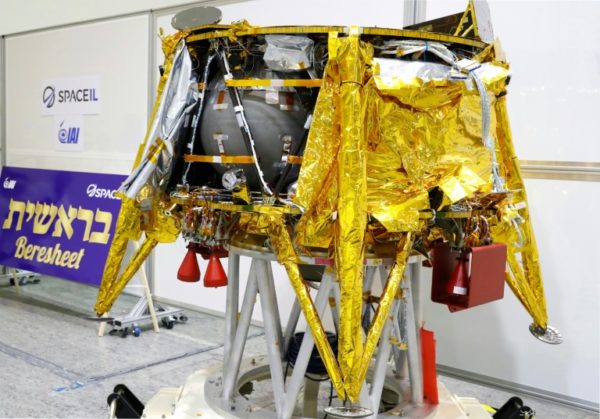An unmanned rocket took off from Cape Canaveral in Florida on Thursday night carrying Israel’s Beresheet spacecraft, aiming to make history twice: as the first private-sector landing on the Moon, and the first from the Jewish state.
The 585-kilogram (1,290-pound) Beresheet, which means “Genesis” in Hebrew, lifted off at 8:45 pm (0145 GMT Friday) atop a Falcon 9 rocket from the private US-based SpaceX company of entrepreneur Elon Musk.
Takeoff was followed live back in Israel, with Prime Minister Benjamin Netanyahu watching alongside engineers at the control center of Israel Aerospace Industries (IAI).
So far, only Russia, the United States and China have made the 384,000-kilometer (239,000-mile) journey and landed spacecraft on the Moon.
“This is a very proud moment,” Netanyahu’s office quoted him as saying.
“True, along with China, Russia and the US, we constitute about one-third of the world’s population, but our contribution is vast, regardless of our small size. We are giants.”
“While this is a great step for Israel, it is a huge step for Israeli technology,” Netanyahu said.
The Israeli craft was placed in Earth orbit, from where it will use its own engine to undertake a seven-week trip to reach the Moon and touch down on April 11 in a large plain.
The rocket also contains an Indonesian satellite and a satellite of the US Air Force Research Laboratory.
The mission is part of renewed global interest in the Moon, sometimes called the “eighth continent” of the Earth, and comes 50 years after American astronauts first walked on the lunar surface.
China’s Chang’e-4 made the first-ever soft landing on the far side of the Moon on January 3, after a probe sent by Beijing made a Lunar landing elsewhere in 2013.
“This is history in the making – and it’s live! Israel is aiming for the #moon and you’re all invited to watch,” said a Twitter message from SpaceIL, the non-profit organization that designed the Israeli craft.
It was backed notably by businessman and philanthropist Morris Kahn, who financed the development of a craft. “Make us proud,” he said Thursday.For Israel, the landing itself is the main mission, but the spacecraft also carries a scientific instrument to measure the lunar magnetic field, which will help understanding of the Moon’s formation.
Technically, it is far from a trivial mission.
After its initial boost from the Falcon 9, the Beresheet’s British engine will have to make several ignitions to place the spacecraft on the correct trajectory to the Moon.
When it arrives, its landing gear must cushion the descent onto the lunar surface to prevent Beresheet from crashing.
– India plans to follow –
Beresheet carries a “time capsule” loaded with digital files containing a Bible, children’s drawings, Israeli songs, memories of a Holocaust survivor and the blue-and-white Israeli flag.
At a cost of $100 million, “this is the lowest-budget spacecraft to ever undertake such a mission. The superpowers who managed to land a spacecraft on the Moon have spent hundreds of millions of dollars in government funding,” IAI said.
“Beresheet is the first spacecraft to land on the Moon as a result of a private initiative, rather than a government.”
After China earlier this year, and now Israel, India hopes to become the fifth lunar country in the spring with its Chandrayaan-2 mission. It aims to put a craft with a rover onto the Moon’s surface to collect data.
Japan plans to send a small lunar lander, called SLIM, to study a volcanic area around 2020-2021.
As for the Americans, who have not been back to the Moon since 1972, a return is now the official policy of NASA, according to guidelines issued by President Donald Trump in 2017.
“This time, when we go to the Moon, we’re actually going to stay,” NASA Administrator Jim Bridenstine said last week.
To achieve this, the US space agency is changing its model and no longer wants to design the missions itself.
NASA, which has installed equipment on Beresheet to upload its signals from the Moon, said last week it aims to land instruments later this year or next year and that it is inviting private sector bids to build and launch the US probes.
The US space agency plans to build a small space station, dubbed Gateway, in the Moon’s orbit by 2026, and envisages a manned mission to Mars in the following decade.



